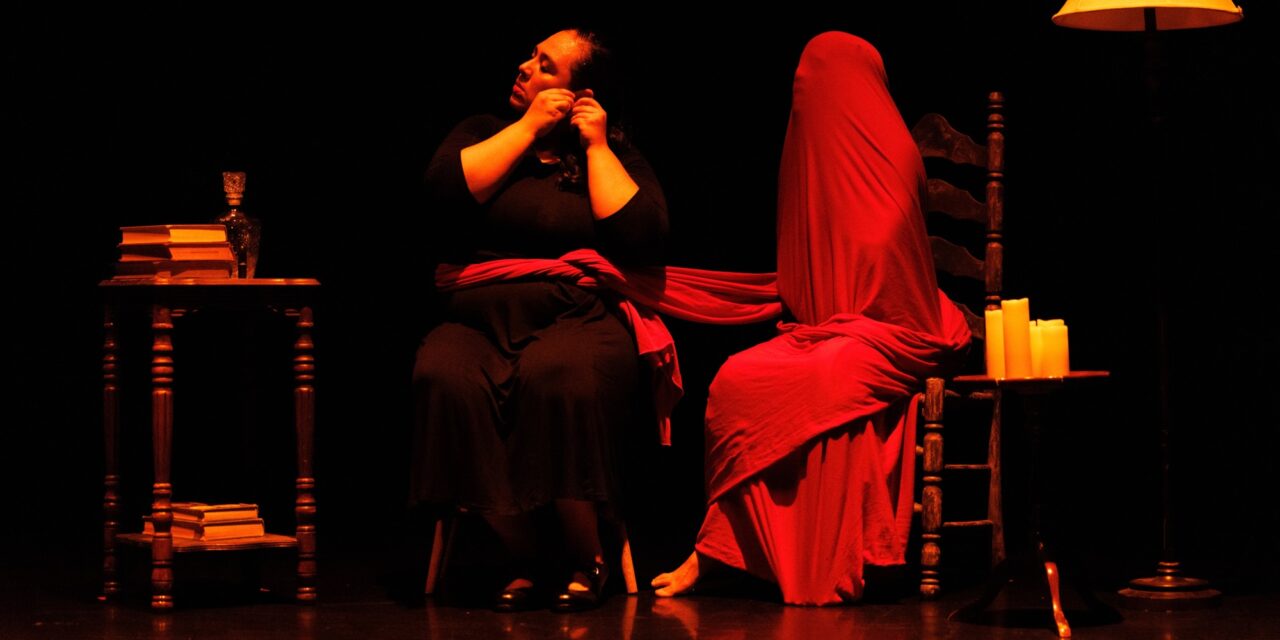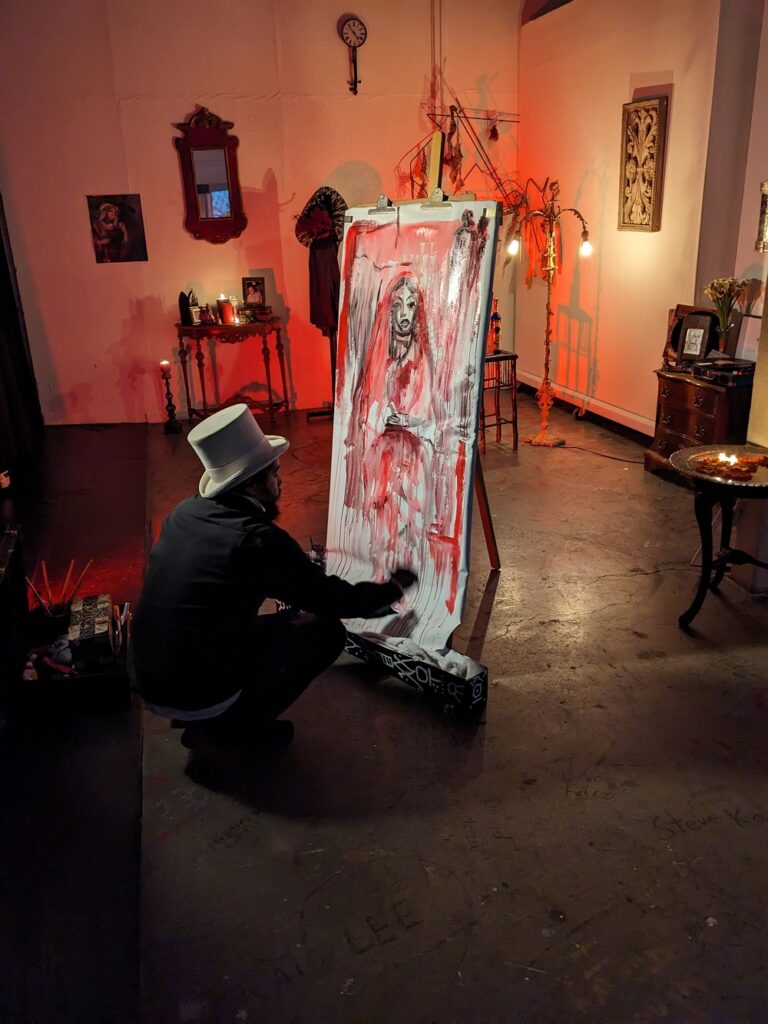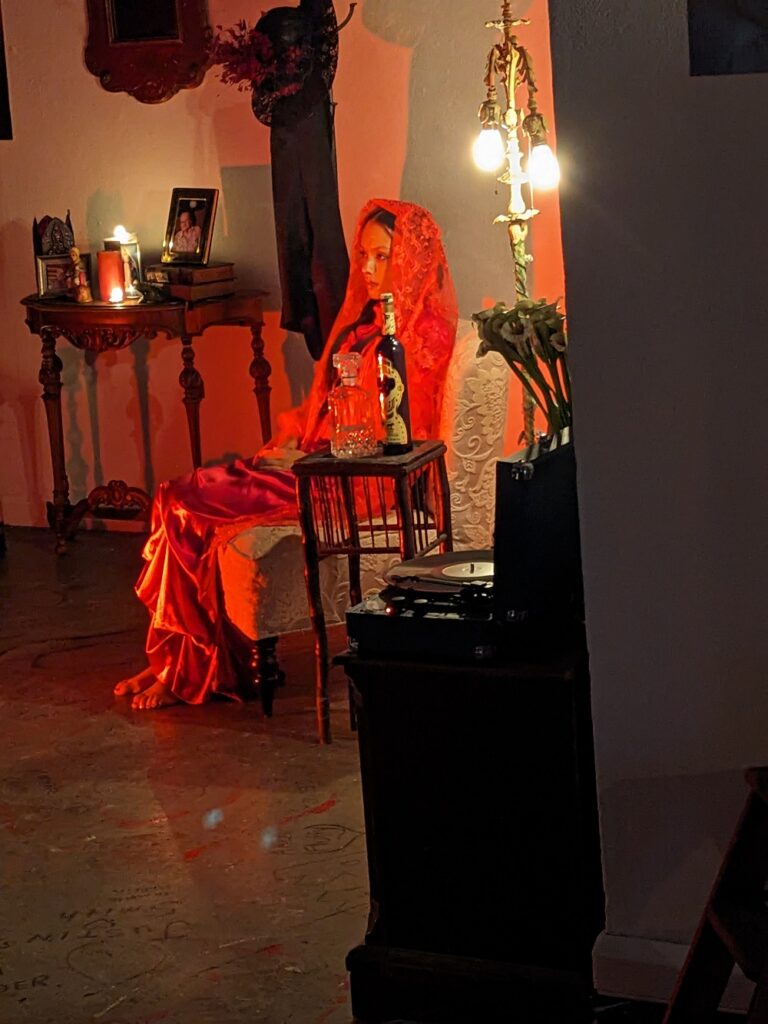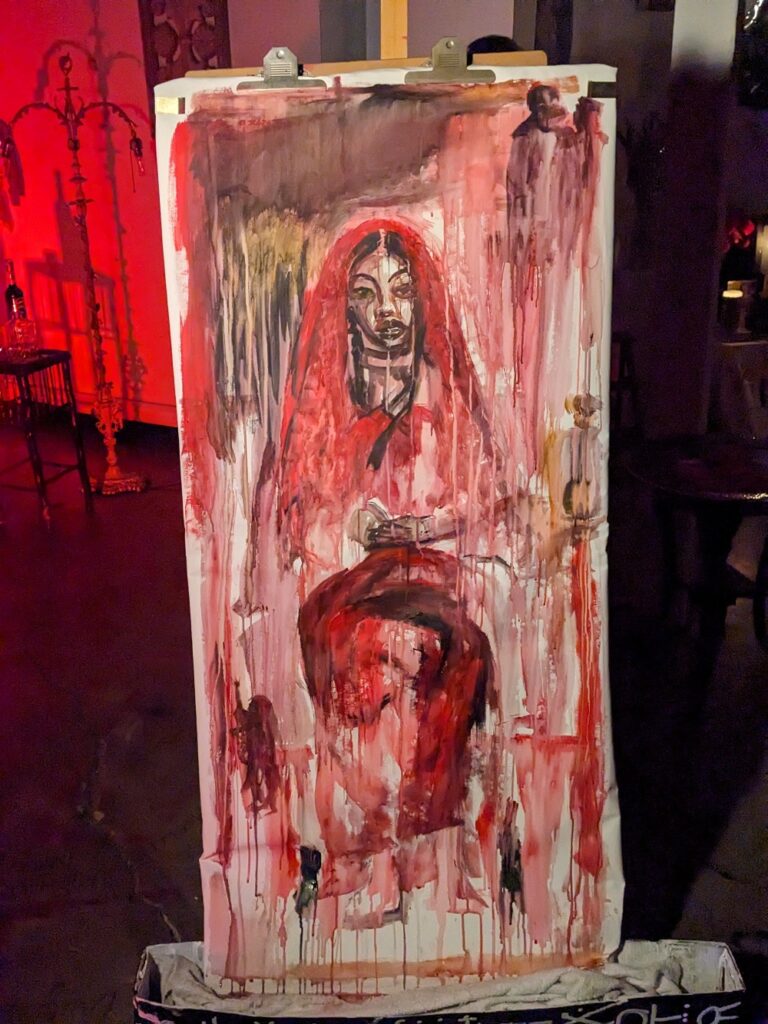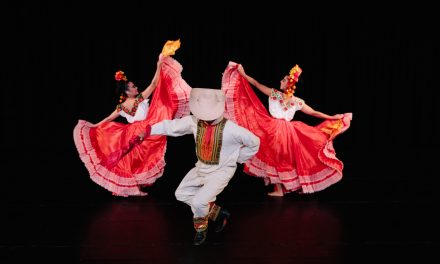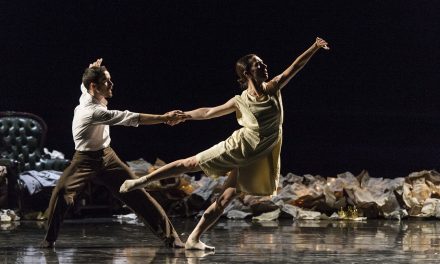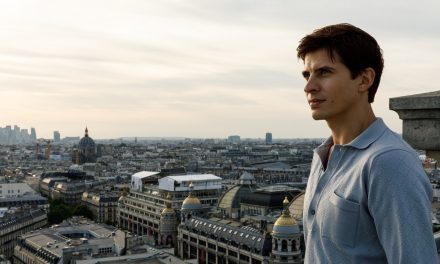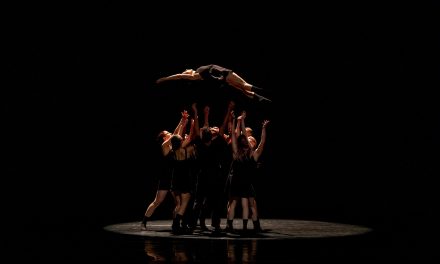One of the many reasons people go to Highways Performance Space is that for 34 years it has been one of the only alternative venues for artists from diverse communities to develop and present their original new works in performance art, dance, music, film, and visual arts. It has proven to be a launching pad for many Los Angeles artists whose early work did not “fit the mold” of what some thought of as art. Most importantly, Highways provided a safe place for artists of color and from the LGBTQ+ to perform works that best represented their culture. It is also a place where they can produce a work that they know will change and mature over time or fail and be discarded. Leo Garcia is the current Executive Director of Highways and Patrick Kennelly is its Artist Director.
This past weekend, it was Mexican American freelance dancer, performer, and creator Andrea Soto who chose Highways to debut her work Lo Que El Fuego Me Dio (What the fire gave me) featuring live music by Maya Paredes and Lu Coy. Although this work of Soto’s is flawed, she displays a lot of potential.
Soto went to great lengths to represent her vision through costuming, music, sculptures by Nikki Ochoa and Julian Prins, and artist Quincy Clemons painting a watercolor portrait of the beautiful Nia Scovel during the time the audience entered Highways until the performance moved into the theater space.
Part of the ambiance, and the performance, was the atmosphere that Soto created throughout the venue. In the bar area there was a video loop projected onto a small screen showing a series of family photographs and an imposed image of someone appearing and disappearing. The aroma of lit scented candles and incense filled the rooms as Wagner’s opera “Tristan and Isolde”came from an old record player.
Scovel posed while sitting in a wooden chair dressed in all satin with a gorgeous red shawl made of lace covering her hair. The room was decorated with paintings and photographs along with sculptures by Nikki Ochoa and Julian Prins, and a portable television playing another video loop of a man lying in a bathtub filled with water. All this gave one the feeling that you had just walked into someone’s home.
Scovel finally stood and began slowly dancing with an invisible lover while stroking the back of his head. She would stop and look into a small wall mirror and then return to her imaginary partner. All this serenity was suddenly interrupted by an ear-piercing laughter by performer Dulce Escobedo.
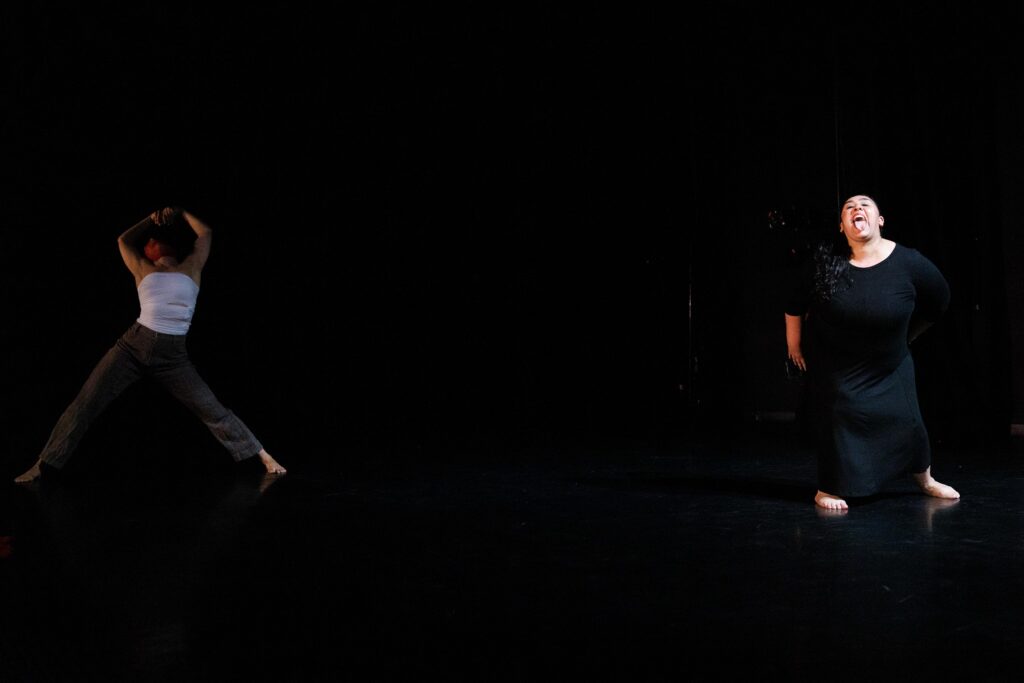
(L-R) Andrea Soto, Dulce Escobedo in Andrea Soto’s “Lo Que El Fuego Me Dio” – Photo by Rafael Hernandez
The audience followed Escobedo into the theater and watched as she moved about. She was soon joined by Soto with her head and face covered with a red scarf and gauze-like material wrapped around her torso and waist. Their duet appeared like a duel for who would have control of the other. Escobedo triumphed.
One of the highlights of the evening was when a woman (Scovel?) very slowly transversed across the space all hunched over, her head and face also covered, while periodically dropping soil that filled the room with a smell of fresh earth. It was a relief from the overpowering smell of scented candles and burning incense. Other than simply walking, she occasionally stopped and briefly made sporadic arm and leg gestures. I was reminded of the 1970s work of Robert Wilson where he would have characters performing excruciatingly slow as in his 1960 production The Life and Times of Sigmund Freud.
The scene shifts yet again with Escobedo seated while putting her hair up and applying makeup. Around her waist was tied a long red piece of gauze-like material that trailed to the floor and at its end was a body cocooned within the cloth like the larva of a butterfly. Escobedo stands up and performs a series of flamenco style steps, walks off stage and removes her shoes before tossing them back into the space. She grabs a glass, lifts it up toward the audience and exclaims, “Salute.” Black out.
The questions that kept haunting me throughout the evening were what exactly was the fire that sparked the many images that Soto was portraying and how were these very powerful metaphors connected? It was as if I had found myself inside someone’s dream that kept jumping from one intangible incident to another.
For more information about Highways Performance Space, please visit their website.
Written by Jeff Slayton for LA Dance Chronicle.
Featured image: (L-R) Dulce Escobedo and another dancer in LO QUE EL FUEGO ME DIO – Photo by Rafael Hernandez.

